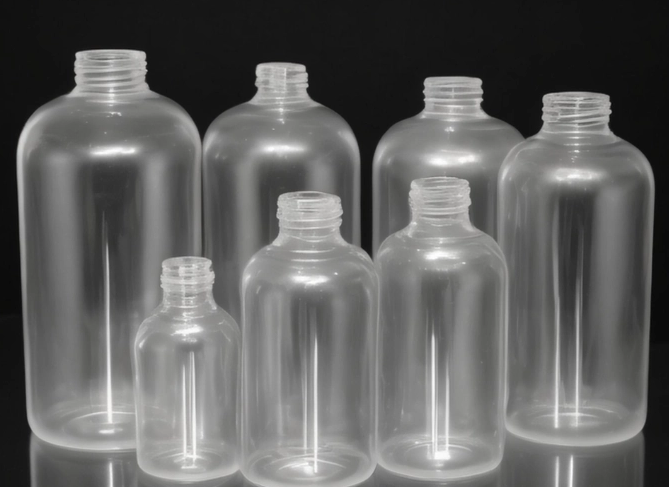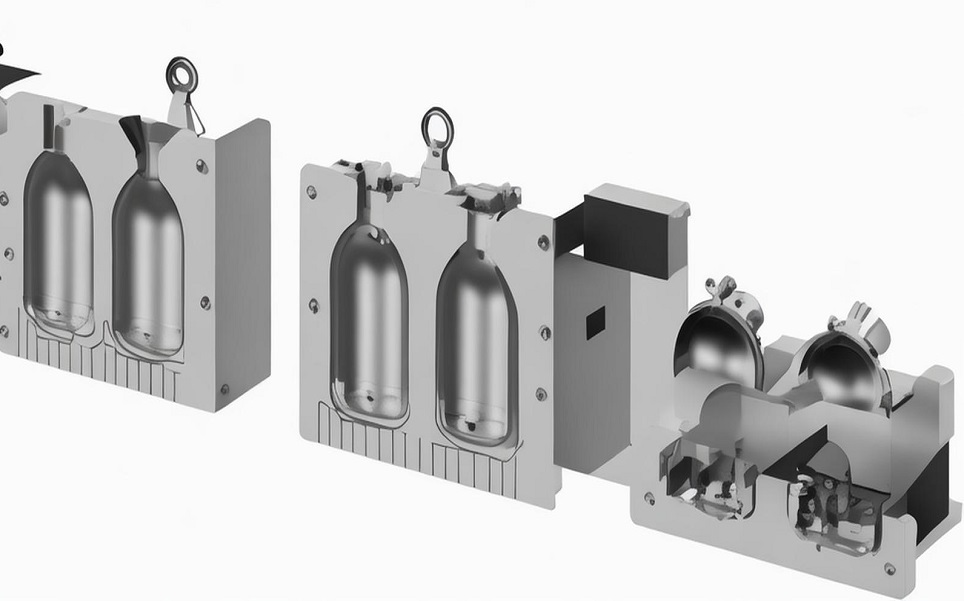Views: 0 Author: Site Editor Publish Time: 2025-07-11 Origin: Site











Polyethylene terephthalate (PET) bottles have revolutionized the packaging industry, offering a lightweight, durable, and recyclable solution for liquid storage. The global demand for PET bottles has been steadily increasing, with the market expected to reach $60 billion by 2025. Understanding the intricate steps involved in the blowing process of a PET bottle is essential for manufacturers aiming to produce high-quality containers efficiently. This process not only impacts the structural integrity and aesthetics of the bottles but also influences production costs and sustainability efforts. Utilizing advanced Blowing Moulds for PET Containers is a critical factor in optimizing this manufacturing process.

Before delving into the blowing process, it is imperative to comprehend the fundamental properties of PET. PET is a thermoplastic polymer resin from the polyester family, known for its excellent tensile strength (ranging between 55-75 MPa), chemical resistance, and clarity. Its glass transition temperature is around 80°C, which allows it to soften sufficiently for molding without degrading. PET's molecular structure consists of long chains of repeating units, providing flexibility and the ability to form amorphous or semi-crystalline structures depending on the cooling rate.
The material's barrier properties against gases like carbon dioxide and oxygen make it ideal for packaging carbonated beverages and other perishables. Additionally, PET is FDA-approved for food and beverage contact, reinforcing its suitability for consumer products. Understanding these properties helps in optimizing the processing conditions during the bottle blowing process, ensuring that the desirable characteristics of PET are retained in the final product.
The journey of a PET bottle begins with the production of preforms through injection molding. The process involves several stages:
Drying of PET Resin: PET granules absorb moisture from the air, which can affect the polymer's viscosity during molding. Drying the resin to a moisture content below 50 ppm is essential, typically achieved by using a desiccant dryer at temperatures around 160°F for 4-6 hours.
Injection Molding: The dried PET resin is fed into an injection molding machine where it is melted at temperatures between 500°F and 575°F. The molten PET is then injected under high pressure into a multi-cavity mould to form preforms.
Cooling and Ejection: The mould is cooled using chilled water to solidify the preform quickly. Precise control over cooling rates ensures uniform crystallinity and reduces cycle times.
Precision in preform manufacturing is crucial, as any inconsistency can lead to defects in the final bottle, such as uneven wall thickness or weak spots. Modern injection molding machines incorporate advanced control systems that monitor parameters like injection pressure, temperature, and cycle times to maintain consistency.
The design of the preform significantly influences the mechanical properties and aesthetics of the final bottle. Critical factors in preform design include:
Weight and Wall Thickness: Determining the optimal weight ensures material efficiency while maintaining structural integrity. Uniform wall thickness prevents weak points and ensures consistent stretching during blowing.
Length and Shape: The preform's length and geometry affect material distribution during stretching. An optimized shape minimizes material wastage and enhances bottle performance.
Neck Finish: The neck area is formed during injection molding and remains unchanged. Designing threads and sealing surfaces accurately is essential for compatibility with caps and closures.
Advanced computer-aided design (CAD) tools and simulation software are employed to model preform designs. Computational fluid dynamics (CFD) analyses help predict how the PET will behave during the blowing process, allowing engineers to make adjustments before manufacturing.
After production, preforms are stored or directly sent to the blow molding machine. The heating stage is critical and involves the following aspects:
Infrared Ovens: Preforms pass through a series of infrared heaters arranged in a tunnel formation. The infrared radiation penetrates the PET material, raising its temperature uniformly.
Temperature Control: The ideal heating temperatures range between 180°F and 250°F. Sensors monitor the temperature of the preforms, and adjustments are made to compensate for ambient conditions and preform variations.
Rotational Movement: Preforms are rotated during heating to ensure even exposure to the infrared radiation, preventing hotspots and uneven stretching.
Proper heating is essential for achieving the desired material properties during the stretch-blow molding stage. An insufficiently heated preform may not stretch adequately, leading to stress concentrations and potential failure points in the bottle.
Thermal profiling involves mapping the temperature distribution within the preform to optimize the heating process. Benefits of thermal profiling include:
Enhanced Material Distribution: Achieving a uniform temperature ensures that the PET flows and stretches evenly, resulting in consistent wall thickness.
Energy Efficiency: Optimizing heater settings reduces energy consumption, lowering production costs and environmental impact.
Quality Improvement: Reduces defects such as haziness, crystallinity issues, or uneven surfaces.
Advanced heating systems may incorporate reflectors or adjustable lamp positions to fine-tune the heating process further. Consistency in this step is crucial for high-volume production environments where even minor variations can lead to significant waste.
The stretch-blow molding process transforms the heated preform into the final bottle shape through simultaneous stretching and blowing. This step involves several critical phases:
Pre-Blowing: Low-pressure air is introduced to slightly expand the preform before stretching, helping to initiate material orientation.
Mechanical Stretching: A stretch rod enters the preform, mechanically elongating it to align the polymer chains vertically, enhancing strength.
Main Blowing: High-pressure air (up to 40 bar) inflates the preform to conform to the mould cavity, orienting the polymer chains horizontally.
Final Cooling: While still in the mould, the bottle is cooled to retain its shape upon ejection.
The orientation of polymer chains during stretching significantly improves the bottle's mechanical properties, including tensile strength, impact resistance, and barrier properties. The dual-orientation (biaxial orientation) achieved through stretching and blowing is unique to the PET bottle manufacturing process.
The Blowing Moulds used in this process are precisely engineered to impart the desired shape and surface characteristics to the bottle. Key considerations include:
Mould Material: Typically made from aluminum or stainless steel, chosen for their durability, thermal conductivity, and surface finish capabilities.
Surface Finish: Polished mould surfaces result in clear and glossy bottles, enhancing product appeal.
Cooling Channels: Integrated channels allow for efficient heat removal, reducing cycle times and improving dimensional stability.
Ventilation Grooves: Allow air to escape during blowing, preventing air pockets and ensuring complete mould contact.
Collaborating with experienced mould manufacturers ensures that the moulds meet exact specifications and are compatible with existing equipment. Advanced mould designs may also incorporate features for embossing or engraving logos and product information directly onto the bottle.
Rapid cooling of the bottle while it remains in the mould is essential to stabilize its shape. This stage involves:
Heat Exchange: Cooling channels within the mould circulate water at temperatures between 40°F and 60°F to absorb heat from the PET.
Solidification: The PET transitions from a pliable state to a rigid form, locking in the molecular orientation achieved during stretching.
Ejection Mechanism: Once cooled, mechanical or pneumatic systems eject the bottle onto a conveyor for downstream processing.
Efficient cooling reduces cycle times, allowing for higher production rates. It also prevents issues such as shrinkage or warping, which can occur if the bottle is too warm when ejected.
The cooling rate can significantly affect the bottle's properties:
Transparency: Rapid cooling prevents crystalline structures from forming, resulting in a clear, glass-like appearance.
Mechanical Properties: Controlled cooling maintains the biaxial orientation, ensuring optimal strength and flexibility.
Dimensional Accuracy: Uniform cooling minimizes internal stresses that could lead to deformation or inconsistencies in bottle dimensions.
Manufacturers often fine-tune cooling parameters based on bottle design and intended use. For example, thicker-walled bottles may require longer cooling times to achieve the desired structural integrity.
Ensuring the quality of PET bottles is paramount, particularly for products destined for food and beverage applications. Quality control measures include:
Visual Inspections: Operators examine bottles for defects such as bubbles, burns, or scratches.
Dimensional Checks: Using precision instruments to measure wall thickness, height, and other critical dimensions.
Leak Testing: Automated systems apply pressure to detect any leaks or weaknesses in the bottle structure.
Aesthetic Evaluations: Assessing clarity, color, and surface finish to meet branding and consumer expectations.
In high-speed production environments, machine vision systems are increasingly utilized to perform inspections. These systems can process hundreds of bottles per minute, identifying defects with high accuracy and consistency.
Beyond basic inspections, advanced testing methods are employed to ensure quality:
Top Load Testing: Assesses the bottle's ability to withstand stacking pressures during storage and transportation.
Drop Testing: Evaluates the bottle's impact resistance, simulating accidental drops during handling.
Stress Crack Resistance: Determines the bottle's susceptibility to cracking under stress over time.
UV Exposure Tests: For products exposed to sunlight, verifying that the bottle maintains integrity and clarity.
Implementing robust quality control protocols reduces waste and recalls, ensuring customer satisfaction and compliance with regulatory standards.

The PET bottle manufacturing industry is continuously evolving, driven by technological advancements and environmental considerations. Key innovations include:
Sustainable Materials: Incorporating recycled PET (rPET) into preforms reduces reliance on virgin materials and lowers carbon footprints.
Lightweighting: Designing bottles that use less material without compromising strength, leading to cost savings and environmental benefits.
Digitalization and Industry 4.0: Utilizing IoT devices and data analytics to monitor production in real-time, optimizing efficiency and predictive maintenance.
Advanced Mould Technologies: Developing moulds with improved thermal management and interchangeable cavities for greater flexibility.
Working with an innovative Blowing Moulds Supplier can facilitate the adoption of these advancements, providing a competitive edge in the market.
Energy consumption is a significant consideration in PET bottle production. Manufacturers are adopting strategies such as:
Efficient Heating Systems: Implementing infrared heating technology with improved reflectors to maximize energy use.
Regenerative Drives: Utilizing regenerative braking in servo motors to recover energy during deceleration phases.
Process Optimization: Analyzing production data to identify areas for reducing cycle times and energy use.
Renewable Energy Sources: Investing in solar panels or wind turbines to power manufacturing facilities.
Sustainability efforts not only reduce operational costs but also enhance brand image, meeting the increasing consumer demand for environmentally responsible products.
The blowing process of a PET bottle is a complex interplay of material science, engineering, and technological innovation. Each step, from preform production to the final quality checks, contributes to the creation of bottles that are not only functional but also meet aesthetic and regulatory standards. The importance of high-quality Blowing Moulds for PET Containers cannot be overstated, as they directly influence production efficiency and product quality.
As the industry moves forward, manufacturers must stay abreast of technological advancements and embrace sustainability practices. Collaboration with experienced suppliers and continuous investment in research and development are essential strategies. The future of PET bottle manufacturing holds promising developments in recycling, material science, and automation, all aimed at meeting the evolving needs of consumers and the environment.
